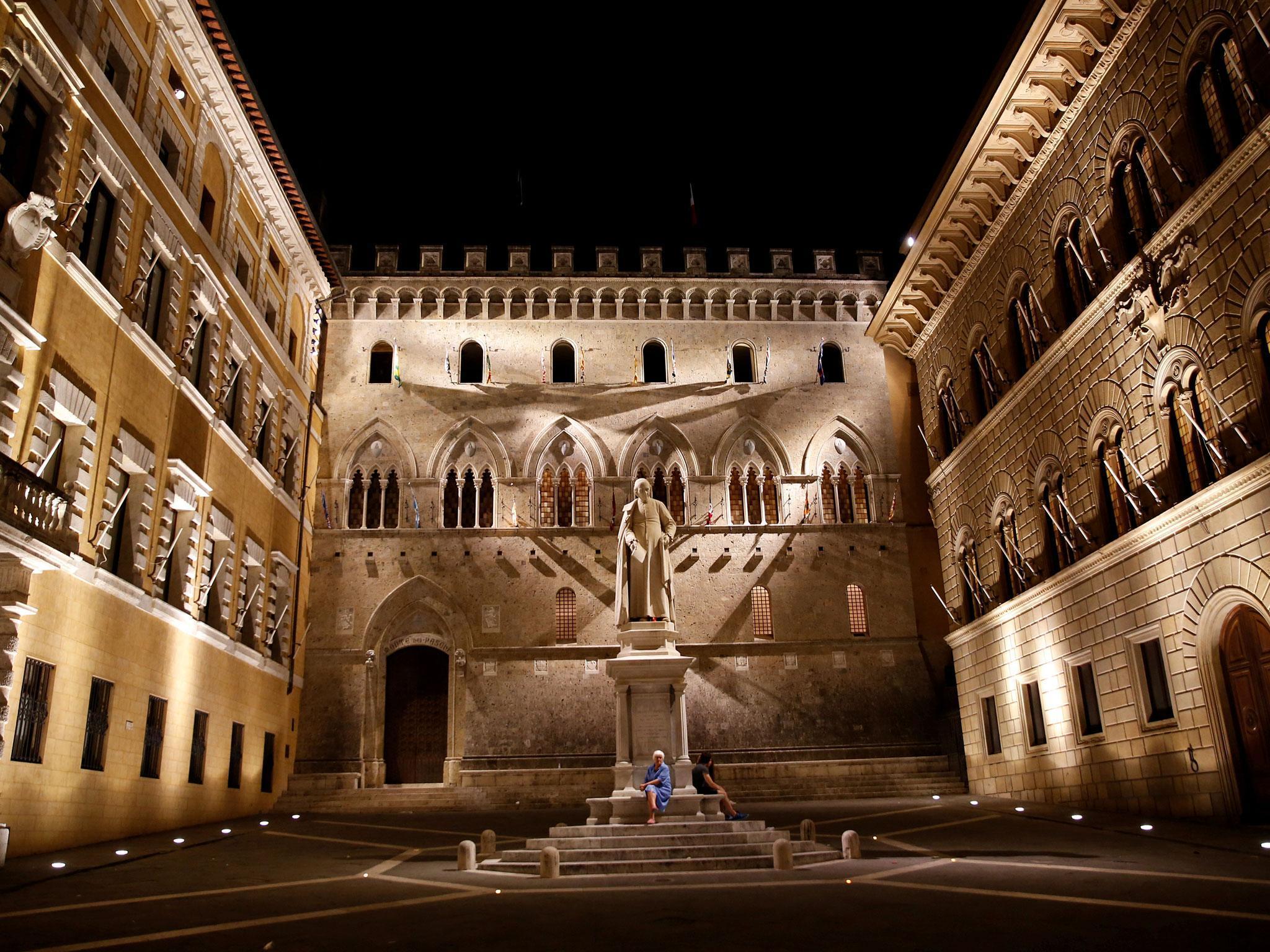The oldest surviving bank in the world would rapidly go bust in a severe European economic downturn, the latest stress tests from the European Banking Authority have found, underlining the still fragile state of the continent’s banks.
Monte dei Paschi di Siena’s capital buffer would be entirely wiped out by 2018, the EBA’s exercise, published this evening shows.
The troubled bank, which was founded in 1472, is currently reporting a capital buffer of 12.1 per cent, but this would be reduced to minus 2.2 per cent by 2018 under the EBA’s “adverse” scenario.
This scenario models the European Union's GDP contracting by 1.2 per cent this year and 1.3 per cent in 2017 before rising by 0.7 per cent in 2018. It includes deep falls in real estate prices and exchange rates.
Monte dei Paschi’s vulnerablilities are no secret and earlier tonight the bank, in anticipation of these results, said it had secured underwriters to back a 5 billion euro capital increase and a turnaround plan involving the sale of 9.2bn euros of bad loans.
The stress tests of 51 of the continent's largest lenders will be closely watched by financial markets, where fears have been growing that the vulnerabilities of the continent’s lenders have the potential to set off another dangerous phase of the 6 year long eurozone crisis.
The EBA’s results show another major Italian bank, Unicredit, seeing its capital buffer fall from 10.38 per cent to 7.1 per cent in the stress scenario.
The government of Matteo Renzi in Rome is locked in a struggle with the European Commission over its plans to recapitalise Italy’s ailing lenders, which have an estimated 360bn euros of bad loans, with state funds.
European regulations require banks’ private bondholders to take losses before state money can be deployed– by Rome is refusing to do that since many of these bondholders are thought to be elderly retail investors.
But the damage in the stress test goes beyond Italy, which has been the focal point for investor anxieties about Europe’s banking system.
In Germany, the giant Deutsche Bank – which has been identified by the International Monetary Fund as one of the major risk to global financial stability – sees its capital ratio fall from 11.1 per cent to just 7.8 per cent.
Commerzbank’s buffer declines from 12.13 per cent to 7.42 per cent.
After Monte dei Paschi, the second biggest casualty in the EBA stress scenario is Allied Irish banks, with the Irish lender’s capital hammered down from 13.11 per cent to 4.31 per cent.
UK banks also suffer in the stress test, with Barclays 11.42 per cent cushion reduced to 7.3 per cent.
HSBC’s capital falls from 11.87 per cent to 8.76 per cent and the Royal Bank of Scotland goes from 15.53 per cent to only 8 per cent.
Unlike in the two previous rounds of stress tests from the EBA this exercise did not contain a pass/fail threshold whereby weak banks are compelled to increase their capital buffers.
After the 2014 exercise the sector was instructed by the EBA to raise an aggregate 25bn euros of capital. This time the question of whether banks need to raise more capital is being left to national regulators.
“Whilst we recognise the extensive capital raising done do far, this is not a clean bill of health” said Andrea Enria, the EBA’s chair. “There remains work to do, which supervisors will undertake.”
The legal minimum capital ratio for all banks, known as "CET1", is 4.5 percent. But regulators also tell banks to hold another 3.5 per cent in subordinated debt, as well as a series of buffers, which are made up of common equity.
On top of that, national supervisors add additional requirements for each lender.
Banks deemed systemically important must have a further cushion of capital.
There is a danger that financial markets will not regard the test as sufficiently rigorous, prompting further falls in their equity prices when markets open again on Monday.
The 34 listed banks in today’s stress tests have lost an average of 33 per cent of their value since the 2014 exercise, suggesting that investors were very far from assured the institutions had properly shored up their balance sheets.
The European Central Bank, which supervises 37 of the lenders in the test, has said it will use a 5.5 per cent ratio in the stressed scenario as an informal benchmark for lenders’ resilience.
Subscribe to Independent Premium to bookmark this article
Want to bookmark your favourite articles and stories to read or reference later? Start your Independent Premium subscription today.


Join our commenting forum
Join thought-provoking conversations, follow other Independent readers and see their replies